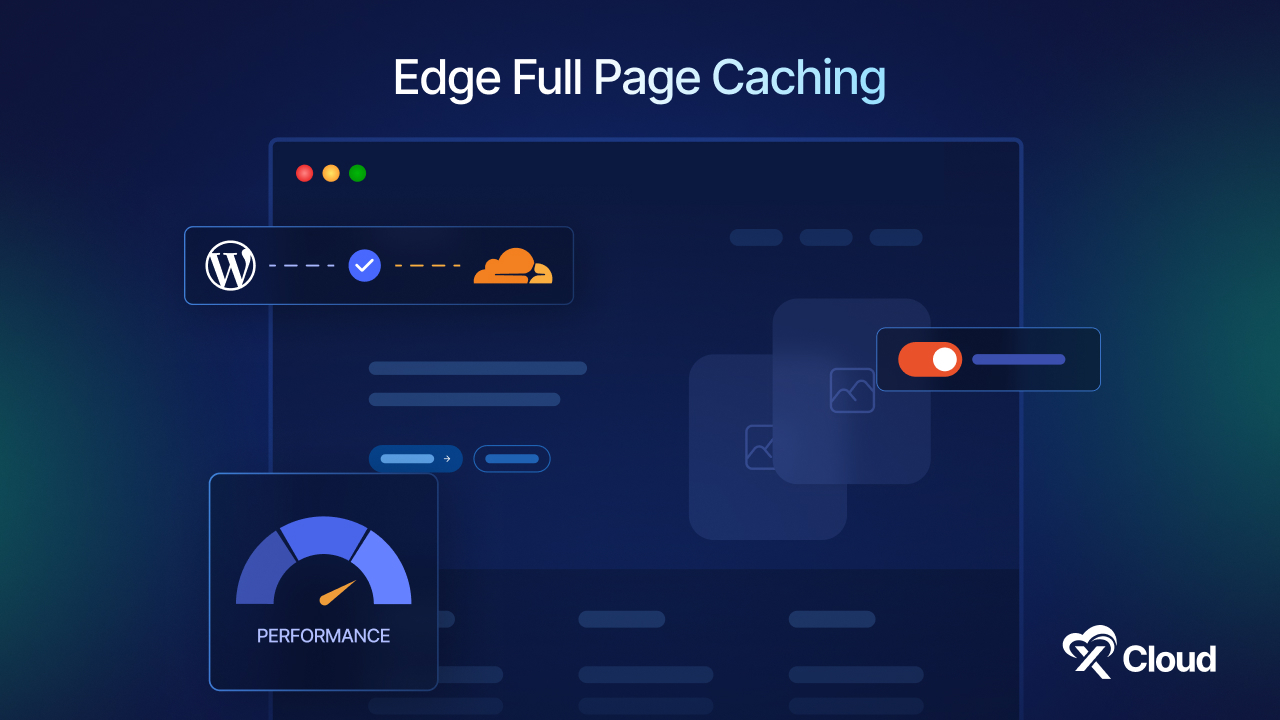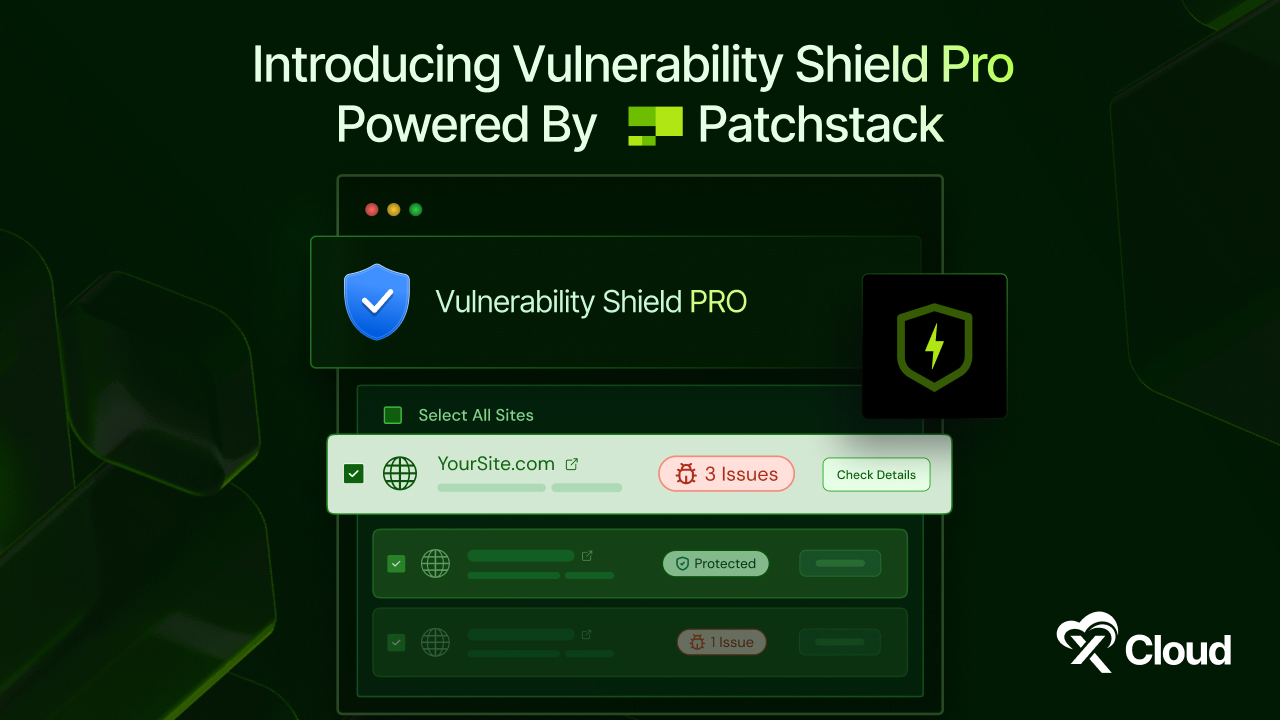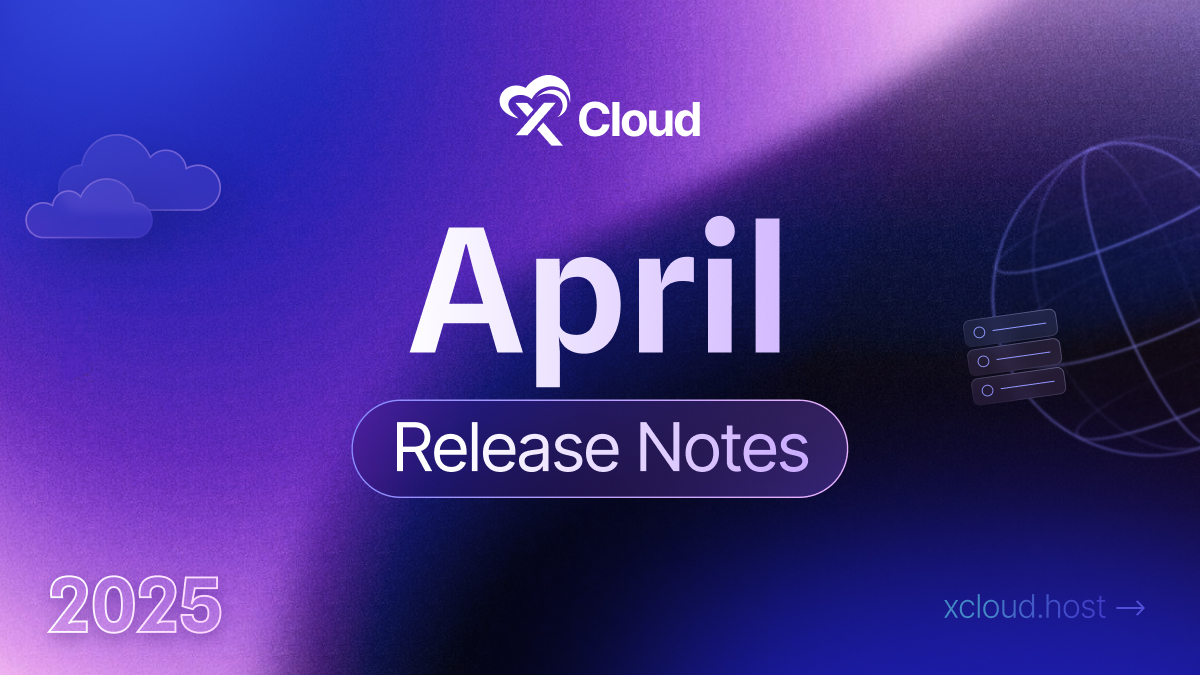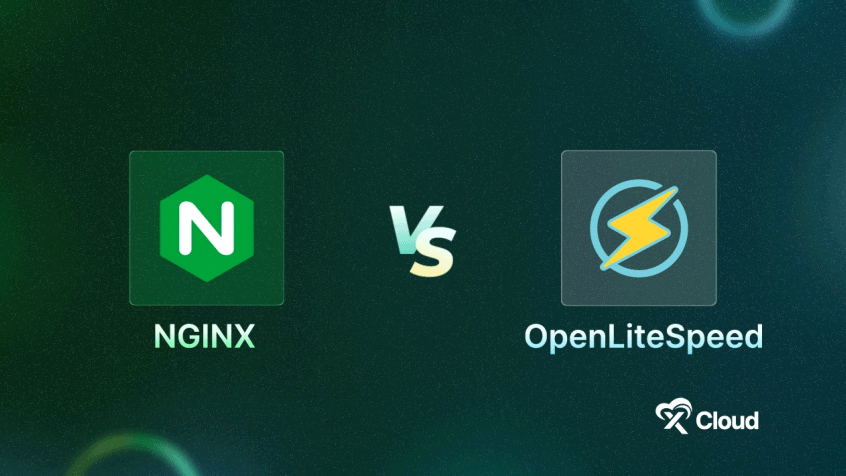Edge caching is rapidly changing how websites deliver content to global users. It stores frequently accessed web assets closer to users at the “edge” of the network.
But what is edge caching? How does it work?
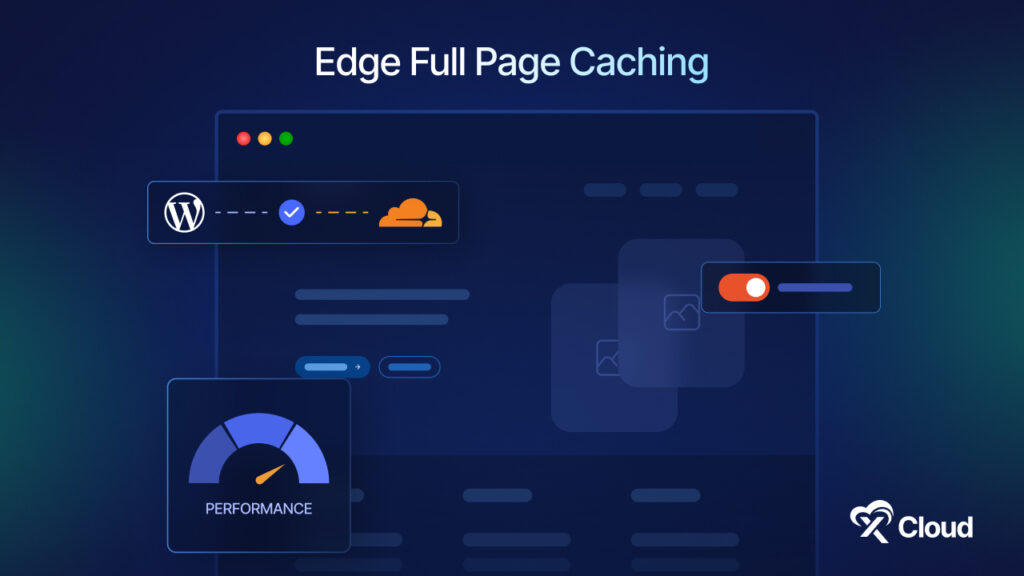
Today, users expect websites to load almost instantly and respond in real time. Traditional hosting solutions often struggle to meet these demands at scale. Edge caching addresses this challenge, and in xCloud hosting, you will get access to edge caching with Cloudflare.
Edge caching is not only about speed. It also influences relevance, user retention, and search engine ranking. It supports SEO improvements and can lead to higher conversion rates. By implementing edge caching, you can push your online presence far ahead of the competition.
Let us go through the details and how you can enable edge page caching to optimize your site and improve user experience.
What Is Edge Caching?
Edge page caching or edge caching, is a web performance technique that improves how websites deliver content. It works by storing copies of your website’s content in data centers that are physically closer to your users. These data centers are known as edge servers.
Instead of sending every request to your main server, the edge server delivers the content from a nearby location. This setup significantly reduces latency and speeds up load times.
In simple terms, edge caching places smaller versions of your website in multiple locations around the world. As a result, your visitors can access your site faster, no matter where they are. This feature becomes especially important when your audience is spread across different countries or regions.
To better understand edge caching, consider it to be an advanced layer built on top of a traditional content delivery network (CDN). CDNs have long been used to deliver static content more quickly. Edge caching improves on this by also handling dynamic content and using smarter routing methods. It stores and delivers that content directly from the network edge.
When you enable Cloudflare edge caching, you access a global network of over 300 edge locations. These servers store and deliver your content with minimal delay. Hosting platforms like xCloud offer built-in Cloudflare integration, which makes it easy to enable edge caching, even for users without deep technical skills.
Edge caching reduces server load and increases website speed. It also improves important SEO metrics such as Time to First Byte (TTFB) and Core Web Vitals. If you use platforms like WordPress, you can install edge caching plugins. These plugins automate the caching process and connect directly to services like Cloudflare.
If your goal is to improve website speed, enabling edge caching is a smart step. With our fully managed hosting, xCloud provides built-in Cloudflare integration to access edge caching easily.
How Does Edge Caching Work?
Edge caching works by storing copies of your website’s content on edge servers. These servers are part of a geographically distributed Content Delivery Network (CDN). They act as intermediaries between your origin server and your users. Let us have a look at a quick step-by-step breakdown of how the process works:
1. User Request
When a user visits your website, their browser sends a request for content such as a web page or an image. The CDN routes this request to the nearest edge server based on the user’s location.
2. Cache Check
The edge server checks if it already has the requested content stored locally. If the content is cached and still valid, the server delivers it directly to the user. This step bypasses the origin server entirely.
3. Origin Fetch (If Needed)
If the content is not cached or if the cached version has expired, the edge server forwards the request to your origin server. The origin server provides the latest version of the content. The edge server then stores this updated content for future requests.
4. Content Delivery
The edge server sends the content back to the user’s browser. Because the edge server is located closer to the user, this reduces latency and speeds up the entire process.
Imagine a user in Tokyo visits your blog, which is hosted in New York. Without edge caching, the request travels all the way to your origin server in New York, creating noticeable delays. With edge caching, a CDN like Cloudflare stores a copy of your homepage on an edge server in Tokyo. The Tokyo server delivers the content instantly. This can reduce page load timesignificantly in some regions, based on industry benchmarks.
Edge caching relies on distributed computing principles. It uses a global network of edge servers. For example, Cloudflare operates over 300 edge locations worldwide. These servers cache static content such as HTML, CSS, JavaScript, and images. Dynamic content, such as personalized user data, may bypass the cache or follow specific caching rules.
By managing these requests intelligently, edge caching keeps your website fast and efficient. It ensures high performance for users around the world.
Edge Caching vs Traditional CDN Caching
Edge caching and traditional Content Delivery Networks (CDNs) both aim to speed up content delivery. However, they function differently and serve distinct purposes. Understanding these differences is essential if you want to maximize your website’s speed and performance.
Traditional CDN Caching
A traditional CDN focuses on caching and delivering static assets. These include images, CSS files, JavaScript, and fonts. The CDN pulls these files from your origin server and stores them in globally distributed servers for future use. This reduces latency and improves load times.
Here is how traditional CDN caching typically works:
- The CDN caches static content the first time a user requests it.
- The same content is served to other users in that region from the cached version.
- The origin server still handles dynamic content, such as personalized pages and real-time data.
Traditional CDNs provide performance gains. However, they usually do not cache dynamic content or HTML pages unless you configure them to do so. This limitation creates an opportunity for edge caching to add more value.
Edge Caching: Going Beyond Static Content
Edge caching improves on traditional CDN methods. It caches not only static files but also dynamic content, full HTML pages, and API responses. It does all of this at the edge of the network. This reduces the number of round trips to the origin server, even for pages that involve real-time data.
Benefits of Edge Full Page Caching
Edge caching can dramatically improve your website’s performance and user experience. By using a Content Delivery Network (CDN), edge caching offers a wide range of benefits for both site owners and visitors. Below are the key advantages:
1. Faster Load Times and Reduced Time to First Byte (TTFB)
Edge caching reduces the Time to First Byte, which is the time it takes for a user’s browser to receive the first byte of data. It does so by delivering content from edge servers that are closer to the user.
For example, an eCommerce site using edge caching can load product pages almost instantly for users around the world. This speed helps reduce bounce rates and keeps users engaged.
2. Lower Server Load and Reduced Bandwidth Costs
Edge caching shifts content delivery away from your origin server. As a result, it lowers the number of direct requests to the server. This reduces server load and decreases bandwidth usage.
For high-traffic websites, this can lead to significant savings in hosting costs. It also improves scalability, allowing your site to handle large traffic spikes without crashing.
3. Improved Core Web Vitals and SEO Rankings
Core Web Vitals include metrics such as Largest Contentful Paint (LCP) and First Input Delay (FID). These are essential for Google search rankings. Edge caching improves these metrics by speeding up how quickly users receive content.
A faster website boosts your SEO performance. It can increase your visibility in search results and drive more organic traffic to your site.
4. Enhanced Security
Many CDNs that support edge caching also include security features. These can include DDoS protection and SSL/TLS encryption at the edge. This setup helps secure your site from attacks and builds trust with your users.
Strong security is especially important for e-commerce websites and platforms that handle sensitive data.
5. Better Experience for Global Audiences
Edge caching ensures fast load times for users across different regions. Whether your visitors are in Sydney, London, or São Paulo, they access your content quickly and reliably.
This consistent performance supports global businesses and blogs that want to engage a worldwide audience. A smooth user experience increases engagement and boosts conversion rates.
Cloudflare Edge Caching with & How to Enable It With xCloud Hosting
xCloud provides edge caching, leveraging the Cloudflare infrastructure used by the Automatic Platform Optimization (APO) service. Cloudflare edge caching is one of the most powerful and widely used edge caching solutions available today. Millions of websites trust Cloudflare, and its global network ensures fast, reliable, and seamless edge content delivery.
xCloud provides built-in integration with Cloudflare edge caching. If your site is configured with Cloudflare, you can enable and manage edge caching from your xCloud dashboard for free.
Cloudflare runs one of the largest and fastest edge networks in the world. It has data centers in 360 cities across more than 100 countries. When you enable Cloudflare edge caching, it automatically stores your website’s static and dynamic content at these edge locations.
This way simplifies the entire edge caching process. Cloudflare handles the technical complexity behind the scenes. Your visitors simply experience faster load times. It also provides a solid foundation for better SEO and long-term performance.
Step-by-Step Guide to Access Edge Caching with xCloud
Enabling Edge Full Page Cache in xCloud is a straightforward process that can significantly boost your website’s performance. xCloud’s integration with Cloudflare’s Content Delivery Network (CDN) makes it easy to cache entire web pages at the network edge, reducing latency and delivering a faster experience for your users. Follow these step-by-step instructions to set it up:
Step 1: Enable Edge Caching
Once logged in, locate and click on the ‘Caching’ option from the main menu. Within the Caching section, click on the ‘Edge Caching’ button to activate the feature. Next, click on ‘Advanced Settings’ to access additional configuration options.
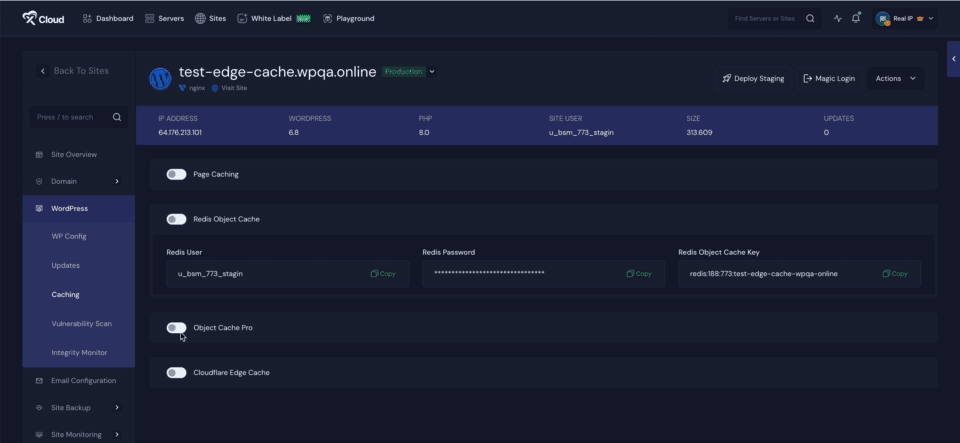
Step 2: Configure Cache Exclusion Rules
In the Advanced Settings menu, you will find options to customize caching behavior:
- Cache Exclusion HTTP URL Rules: Specify URL patterns you want to exclude from being cached.
- Cache Exclusion Cookie Rules: Define cookie-based rules to prevent caching for certain sessions or users.
Set these rules according to your specific preferences or requirements.
After all the configurations, click on the ‘Save Settings’ button. After that, if you go to your xCloud dashboard, you will see the plugin ‘xCloud Cloudflare Edge Cache’ has been installed on your site.
Read the step-by-step instructions for a detailed guide on enabling Cloudflare edge caching with xCloud.
Things to Keep in Mind When Using Edge Page Caching
Edge caching offers many advantages, but it also comes with specific challenges. By understanding and addressing these issues, you can maximize performance while maintaining a smooth user experience. Below are the key considerations:
1. Handling Dynamic or Personalized Content
Edge caching performs well when delivering static content such as images, CSS, and HTML pages. However, caching dynamic content like user dashboards, shopping carts, or live data feeds can be problematic. If cached incorrectly, these pages may display outdated or inaccurate information.
To prevent this, apply cache exclusion rules. The xCloud setup guide explains how to do this. For instance, you can exclude URLs like /cart or pages that include authentication cookies. This approach ensures that dynamic content bypasses the cache. Balancing cached and non-cached content is essential for websites that serve both types.
2. Importance of Cache Purging
Cached content becomes stale when your site updates frequently. Changes such as new blog posts, product listings, or pricing updates require purging the cache. If you skip this step, users may see outdated content. This can damage trust and user satisfaction.
xCloud simplifies cache purging with a dedicated button in the dashboard. Still, you should build a habit of clearing the cache after major updates. High-traffic websites should consider automating cache purges. This ensures that visitors always receive the most current version of your site.
3. Balancing Cache Duration
Setting an appropriate cache expiration time is vital. If the cache duration is too short, edge servers will request fresh content too often. This reduces the performance gains. If it is too long, users may see old content.
Most CDNs, including Cloudflare through xCloud, allow you to set custom cache durations. For static content such as blog posts, a longer duration, like 24 hours, is usually effective. For frequently updated content, such as product pages on an e-commerce site, a shorter duration, like one hour, works better. Adjust these settings based on how often your content changes and what your users expect.
4. Check for Excluded URL Patterns or Cookies
Another potential cause is exclusion based on URL patterns or cookies. Specific sections of your site, like /cart or /checkout, might be configured to bypass caching automatically. Similarly, pages that depend on custom cookies, such as login sessions or shopping carts, might also be excluded. If you expect a page to be cached but notice that it is not, it is a good idea to contact xCloud Support. They can help verify whether certain pages or cookies have been intentionally excluded from caching or whether any additional custom caching rules are influencing this behavior.
5. Password Protection and Edge Caching
If your site has Password Protection enabled, Edge Caching cannot function. Password protection must be disabled for Edge Caching to work successfully. Make sure to check this setting if Edge Caching appears inactive after other troubleshooting steps.
6. Geo-blocking and IP Blocking Considerations
Since Edge Caching operates at Cloudflare’s network level, it does not respect geo-blocking rules that are configured at the server (NGINX) level. This means visitors from regions that you intended to block might still receive cached content. Similarly, IP addresses that have been blocked via xCloud’s IP Deny tool may still be able to access cached pages through Cloudflare’s edge network. If maintaining strict geo- or IP-based access control is critical for your site, you may want to reconsider enabling Edge Caching.
Frequently Asked Questions
Is Edge Caching Included in All xCloud Hosting Plans?
Yes, Edge Caching comes for all live websites hosted on xCloud, you can enable it right from the dashboard.
Will Edge Caching Boost Mobile Site Performance?
It can, depending on your setup. If your site delivers custom content specifically designed for mobile users, you can activate a mobile-targeted cache. However, if your site uses a responsive layout that adapts seamlessly to all screen sizes with the same code, a separate mobile cache isn’t required.
Should I Install WordPress Performance Plugins on xCloud?
There’s no need. xCloud’s infrastructure is optimized for WordPress out of the box. With built-in local caching, Edge Caching, and an integrated global CDN, your site’s performance is already fully optimized—no extra plugins needed.
Can I Deactivate Edge Caching on My Site?
Yes, Edge Caching can be turned off at any time via your xCloud control panel. If you’re unsure whether your site should use it, our expert support team can guide you based on your website’s specific requirements.
Enable Edge Full Page Caching & Elevate Your Website Experience
So, edge caching is a powerful solution for any website owner who wants to improve performance, enhance user experience, and boost SEO. By using a Content Delivery Network (CDN) to store content on edge servers, you can deliver web pages more quickly. This way, you can reduce server load and improve Core Web Vitals. At the same time, it ensures a smooth experience for users across the globe.
If you are ready to improve your site’s performance, start delivering a faster and more engaging experience to your visitors today using edge
If you have found this blog helpful, feel free to subscribe to our blogs for valuable tutorials, guides, knowledge, and tips on web hosting and server management. You can also join our Facebook community to share insights and engage in discussions.



